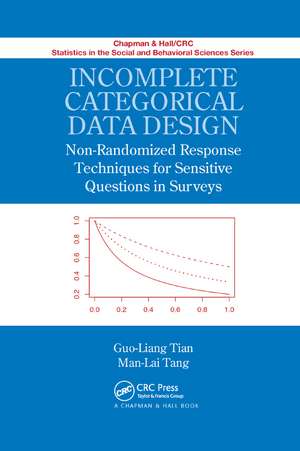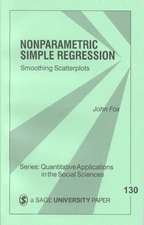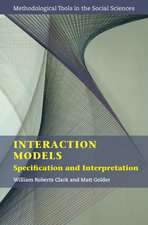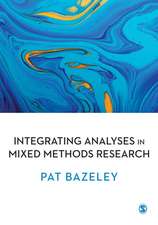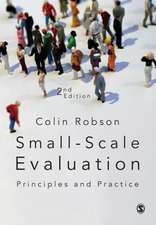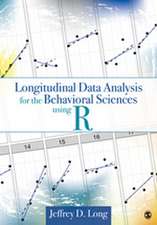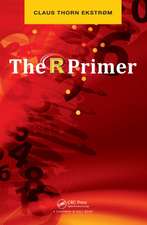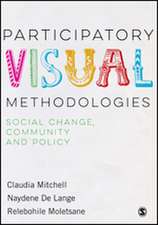Incomplete Categorical Data Design: Non-Randomized Response Techniques for Sensitive Questions in Surveys
Autor Guo-Liang Tian, Man-Lai Tangen Limba Engleză Paperback – 7 oct 2019
Incomplete Categorical Data Design: Non-Randomized Response Techniques for Sensitive Questions in Surveys is the first book on non-randomized response designs and statistical analysis methods. The techniques covered integrate the strengths of existing approaches, including randomized response models, incomplete categorical data design, the EM algorithm, the bootstrap method, and the data augmentation algorithm.
A self-contained, systematic introduction, the book shows you how to draw valid statistical inferences from survey data with sensitive characteristics. It guides you in applying the non-randomized response approach in surveys and new non-randomized response designs. All R codes for the examples are available at www.saasweb.hku.hk/staff/gltian/.
| Toate formatele și edițiile | Preț | Express |
|---|---|---|
| Paperback (1) | 491.24 lei 6-8 săpt. | |
| CRC Press – 7 oct 2019 | 491.24 lei 6-8 săpt. | |
| Hardback (1) | 499.39 lei 6-8 săpt. | |
| CRC Press – 17 aug 2013 | 499.39 lei 6-8 săpt. |
Preț: 491.24 lei
Preț vechi: 577.93 lei
-15% Nou
Puncte Express: 737
Preț estimativ în valută:
94.01€ • 97.79$ • 77.61£
94.01€ • 97.79$ • 77.61£
Carte tipărită la comandă
Livrare economică 14-28 aprilie
Preluare comenzi: 021 569.72.76
Specificații
ISBN-13: 9780367379629
ISBN-10: 0367379627
Pagini: 322
Dimensiuni: 156 x 234 x 23 mm
Greutate: 0.51 kg
Ediția:1
Editura: CRC Press
Colecția Chapman and Hall/CRC
ISBN-10: 0367379627
Pagini: 322
Dimensiuni: 156 x 234 x 23 mm
Greutate: 0.51 kg
Ediția:1
Editura: CRC Press
Colecția Chapman and Hall/CRC
Public țintă
Professional Practice & DevelopmentCuprins
Introduction. The Crosswise Model. The Triangular Model. Sample Size Determination for the Crosswise and Triangular Models. The Multi-Category Triangular Model. The Hidden Sensitivity Model. The Parallel Model. Sample Size Calculation for the Parallel Model. The Multi-Category Parallel Model. A Variant of the Parallel Model. The Combination Questionnaire Model. Appendices. References. Indices.
Notă biografică
Guo-Liang Tian is an associate professor of statistics in the Department of Statistics and Actuarial Science at the University of Hong Kong. Dr. Tian has published more than 60 (bio)statistical and medical papers in international peer-reviewed journals on missing data analysis, constrained parameter models and variable selection, sample surveys with sensitive questions, and cancer clinical trial and design. He is also the co-author of two books. He received a PhD in statistics from the Institute of Applied Mathematics, Chinese Academy of Science.
Man-Lai Tang is an associate professor in the Department of Mathematics at Hong Kong Baptist University. Dr. Tang is an editorial board member of Advances and Applications in Statistical Sciences and the Journal of Probability and Statistics; associate editor of Communications in Statistics-Theory and Methods and Communications in Statistics-Simulation and Computation; and editorial advisory board member of the Open Medical Informatics Journal. His research interests include exact methods for discrete data, equivalence/non-inferiority trials, and biostatistics. He received a PhD in biostatistics from UCLA.
Man-Lai Tang is an associate professor in the Department of Mathematics at Hong Kong Baptist University. Dr. Tang is an editorial board member of Advances and Applications in Statistical Sciences and the Journal of Probability and Statistics; associate editor of Communications in Statistics-Theory and Methods and Communications in Statistics-Simulation and Computation; and editorial advisory board member of the Open Medical Informatics Journal. His research interests include exact methods for discrete data, equivalence/non-inferiority trials, and biostatistics. He received a PhD in biostatistics from UCLA.
Descriere
A self-contained, systematic introduction, this book shows you how to draw valid statistical inferences from survey data with sensitive characteristics. It guides you in applying the non-randomized response approach in surveys and new non-randomized response designs. The techniques covered integrate the strengths of existing approaches, including randomized response models, incomplete categorical data design, the EM algorithm, the bootstrap method, and the data augmentation algorithm. All R codes for the examples are available online.
